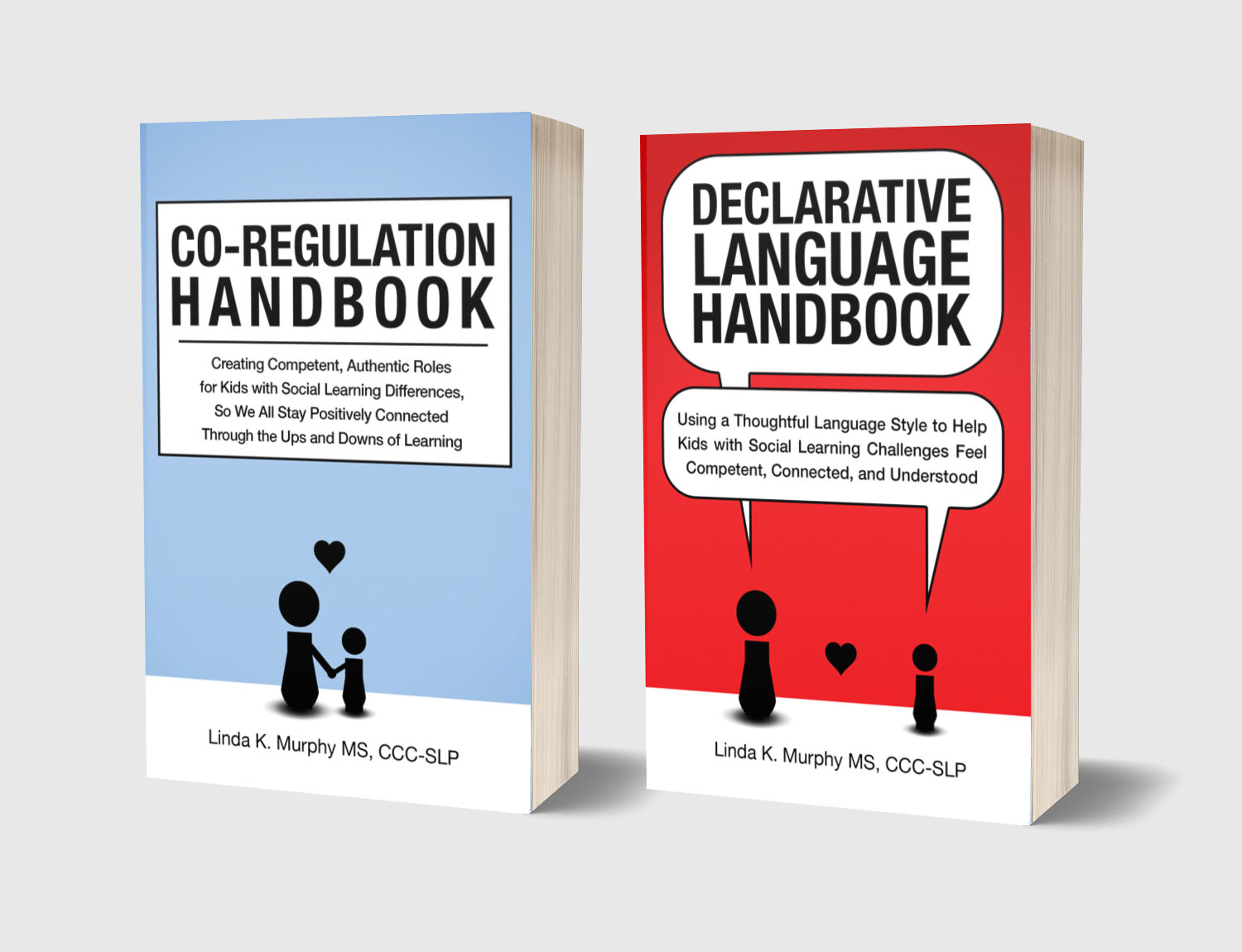I’m Thinking! The Importance of Wait Time (DL in the Classroom - Part 2)
Last week I shared a story about Ms. C. and her assistant Diane, and how they are incorporating declarative language in their classroom. They have seen impressive results as they have changed their speaking style, and they both recognize the importance of giving students time to think in response to a declarative statement. I want to explain this a little bit.
Part of what declarative language does, is foster initiation, spontaneity, and creative thought. When we wait quietly, after making a declarative statement, we give kids the time and space they need to:
· process what we have said,
· formulate a response,
and – importantly
· work up the confidence to share it!
When we prematurely prompt with more language, we interrupt and interfere with this important process, thereby undermining all that we are trying to build. If we want to support independent communication, it is so important on our part to be able to WAIT.
But, realistically, in a fast paced or busy environment, wait time can be hard to do, right?
Here is where we left off last week with Ms. C:
I am looking for some more help or tips to really focus on wait time for Diane and I. A lot of my students need it for many different reasons. I also realize that it is incredibly hard to focus on the wait time in the classroom when there are so many other things going on. Do you have any suggestions that we can use for practicing longer wait time?
Here is my response and a few ideas, that you could try too!
1. Narrate what is going on, to help everyone feel comfortable with the silence.
What we do a lot in our groups, where kids (and therapists too for that matter!) must manage wait time while kids are thinking, is to simply narrate in the moment what is going on. So, we might say:
I can tell that so and so is thinking right now. They are quiet, but it is because they are thinking about what they want to say....
Or
I notice that so and so is quiet, but they ... (and then we describe their body language: have a hand on their chin, are looking up, etc.) …which tells me they are thinking. I love how everyone is waiting quietly so our friend can think about what they want to say.
Amazingly - what we then begin to observe over time - is the students themselves start to narrate this process, which helps everyone read the nonverbal communication of the "thinker", and together they protect the space that their peer might need. For example, after this has been modeled, we've heard other kids say things like, "I think so and so is thinking right now...". As a group, they start to work together to support each other as communicators, which is truly awesome!!
2. Name the “quiet,” possible feelings that may be associated with it, and create separate opportunities to practice feeling comfortable with silence.
Another idea we've worked on is "naming the quiet," and helping kids feel okay in that lull. I know some kids get anxious when it is quiet, and feel like they need to fill the space. So, I may say to those students, "I know the quiet can feel different, but it's okay to wait quietly. That helps your friend think." And for some students, we simply practice "being in silence" when we have the opportunity (i.e., "Let's see if we can be present, and quiet in the moment for 10 seconds. I wonder if we could do that? It will help us practice being supportive to our friends when they are thinking about what they want to say...").
3. Create competent roles for all of us!
Think of a concrete, competent role you could give students and teachers during the quiet. For example, what are some things you could do while you wait? Sometimes I count in my head and promise I won't add more language until I get to 10 or 20 or 30 seconds, depending on the student. Counting has helped me, because it gives me something concrete to base my additional language on, and helps me ensure I don't talk prematurely. The more you do this, the easier it gets! Especially when you realize how that extra 10 seconds can really make a BIG difference for some students.
4. Use a co-regulatory pattern among those who are waiting, to create competent, contingent roles and connection, while also increasing awareness and appreciation for everyone’s unique learning style.
Think of a co-regulatory pattern that does not involve talking, that the other kids can use while they wait. For example, they could quietly pass around a ball or other item while their peer thinks, and count passes in their head. Then, the whole class knows "how many passes" each individual student might need for their thinking time, which can help with the predictability of it in future opportunities (i.e., "I remember so and so usually needs us to do 5-10 passes while they think. Let's be sure we are quiet for that long while we pass the ball").
Following this exchange, Ms. C. shared that she started with idea #1, naming the nonverbal communication and “thinking” in the moment, with great results! An example declarative language statement she used was, “I can see that Janice is reaching for her device. I think she is getting ready to say something….” This helped everyone notice Janice’s nonverbal communication, and honor the time that she needed.
Never underestimate the power of “think time.” Notice and then narrate what you see with declarative language to make this process transparent to everyone.
Have a great week!
If you like my Sunday Snippets of Support, you can receive them directly to your inbox here.


